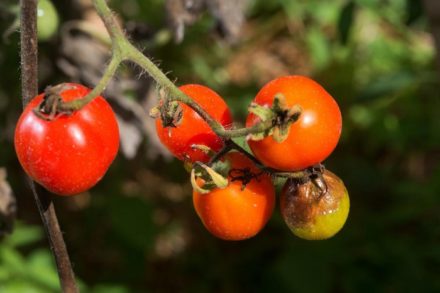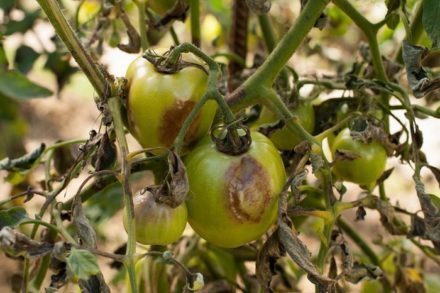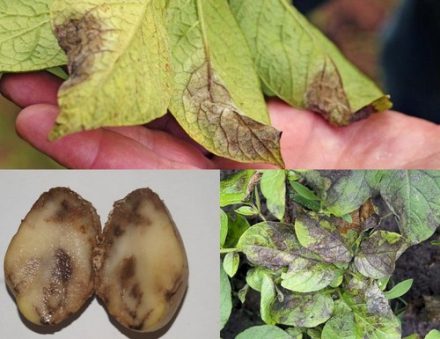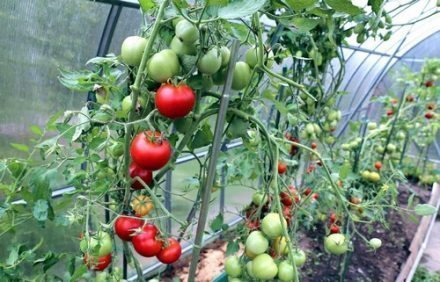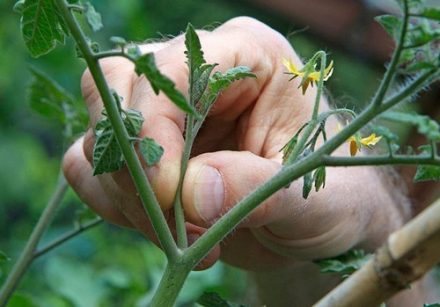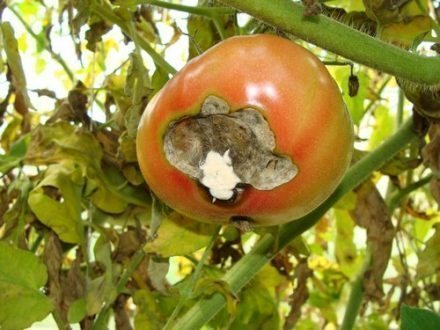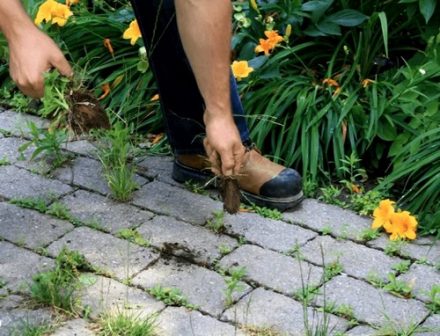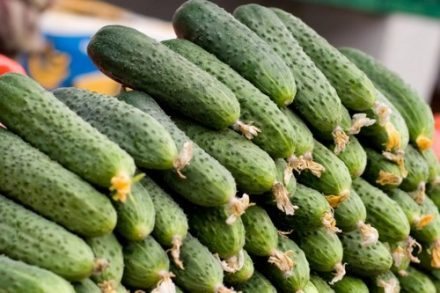Late blight is a genus of fungus-like protists that provoke the disease late blight, which most often affects nightshade crops; it does not bypass tomatoes either. The insidious late blight infects above-ground and underground parts of seedlings. Phytophthora has more than 100 species.
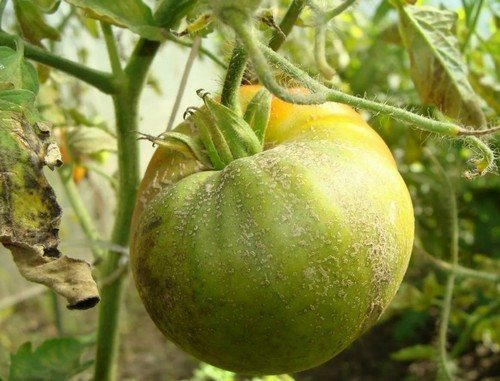
The disease develops quickly, and 70% of the foliage is affected and dies. Lesions also develop on tomato stems. Without treatment, in a warm and humid environment, late rot will quickly spread. Eventually it will infect neighboring plants. Entire crops are destroyed by this fungal disease.
Treatment of plants with biological products
Copper sulfate is an effective remedy for late blight. They adhere to the proportions - 2 tbsp. l. for 10 liters of water. Parts of tomatoes growing above the ground should be thoroughly treated with the mixture. It is better to apply only before the plant begins to flower.

Another biological composition is Fitosporin-M. The active substance is processed mycobacterial spores, which deactivate the development of the disease. For processing, the spraying method is used. Dissolving 1 tbsp in 10 liters. l. Phytosporin is sprayed on the above-ground parts of the plant. Repeated procedures are carried out at intervals of 2 weeks.
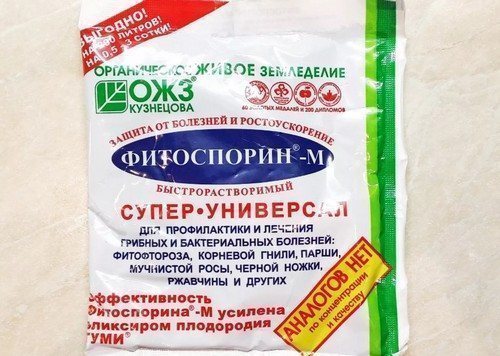
Use of effective bacterial formulations
Alirin-B includes Bacillus bacteria in its main composition. The method of control is spraying with a solution of 10 tablets for every 10 liters of water. Also water the plants with a mixture of 2 tablets per 10-liter bucket of water.The procedures should be repeated after 7–9 days. In total, up to 3 procedures are performed per month.
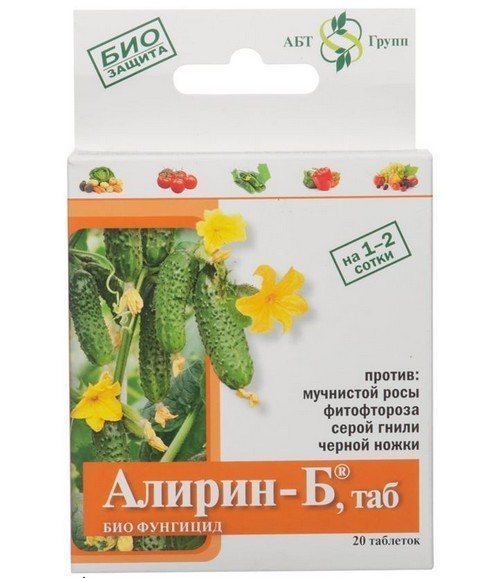
Important processing rules
It is necessary to treat plants in dry, sunny weather, evenly wetting the bush on all sides. The diluted solution of the drug should not be stored. Must be used the same day it is prepared. It is recommended to alternate different drugs so that fungi do not become resistant to one or another substance.
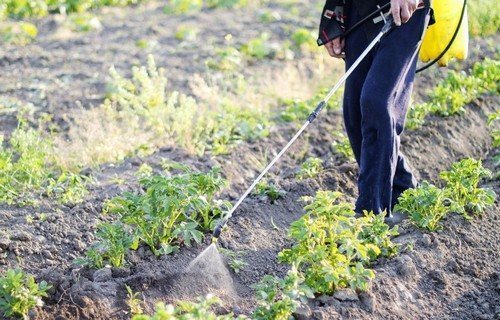
Trichopolum
A good remedy for late blight is Trichopolum, which is an antibiotic. It should be used in proportion: 10 liters. Dissolve 10 tablets in water. Use the product for the first time when the ovaries begin to form, and then it must be repeated twice every 30 days.
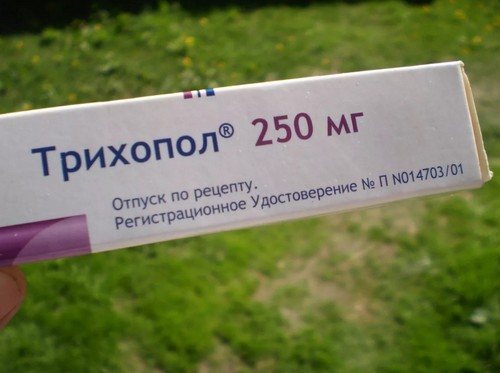
Peroxide
The fight is based on treating tomatoes with a diluted 3% preparation. It is a long-standing method used in the fight against late blight. Maintain the proportion when diluting - 2 tbsp. l. for 1 liter of water. The composition is inexpensive and can be purchased everywhere, which is why the method is popular.
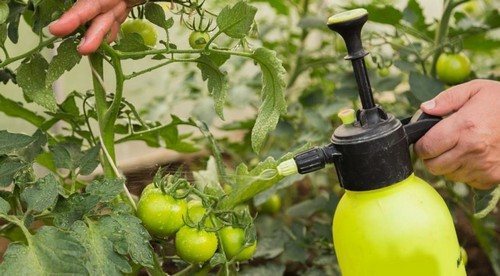
Tomato blight is a common problem affecting mostly furrow crops grown for the processing industry. Crop losses from disease can account for 25% of total annual production. And losses for individual, small producers may be even higher. If left unattended, the disease will quickly spread from existing plants to neighboring farmers' plots.


